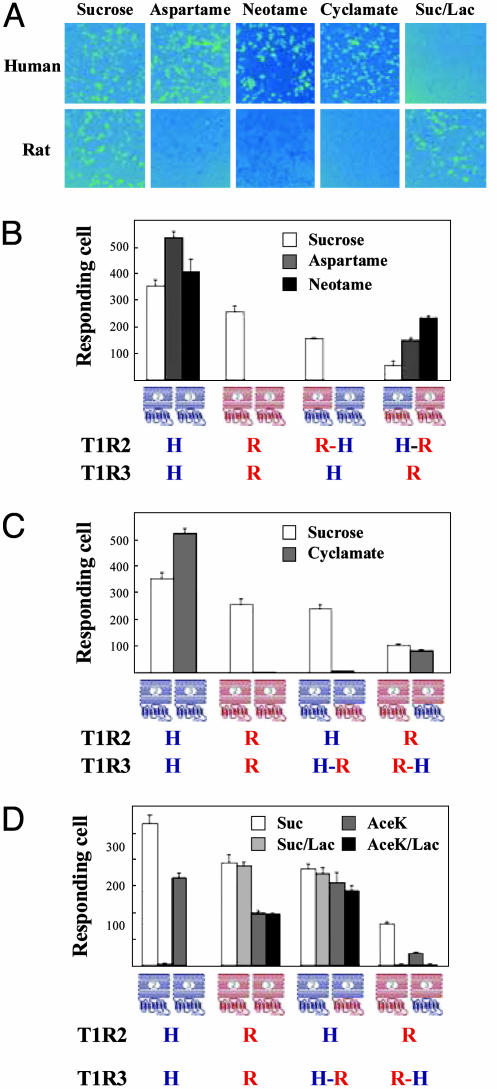Fig. 1.
Sweeteners map to different domains/subunits of the human sweet taste receptor. (A) Responses of human and rat sweet taste receptors to sucrose (200 mM), aspartame (10 mM), neotame (0.1 mM), cyclamate (10 mM), and sucrose (200 mM) in the presence of lactisole (1 mM) (Suc/Lac). HEK-293T cells were transiently transfected with human or rat T1R2, T1R3, and a Gα15 chimera, Gα15/i1 (7), and assayed for intracellular calcium increases in response to sweeteners. (B) Aspartame and neotame were mapped to the N-terminal extracellular domain of human T1R2. Combinations of T1R chimeras were transiently transfected into HEK-293T cells with Gα15/i1 and assayed for responses to sweeteners at the concentrations listed in A. The T1R2H-R/rat T1R3 combination generated a significantly weaker response to the control sweetener sucrose than did the WT receptors, possibly because of less than perfect folding of the artificial receptor subunit. Nonetheless, the same receptor responds well to aspartame and neotame. Because of the potential differences in folding, surface targeting, and coupling efficiency, we avoided comparing the relative activities of different combinations. Instead, we looked for the presence or absence of response to different sweeteners within each combination. (C) Cyclamate was mapped to the C-terminal transmembrane domain of human T1R3. (D) Lactisole was mapped to the transmembrane domain of human T1R3. Different combinations of T1R chimeras were transiently transfected into HEK-293T cells with Gα15/i1 and assayed for responses to sucrose (200 mM) and AceK (10 mM) in the absence or presence of lactisole (1 mM). The activities in B–D represent the mean ± SE of the number of responding cells for four imaged fields of ≈1,000 confluent cells. H, Human; R, rat.

